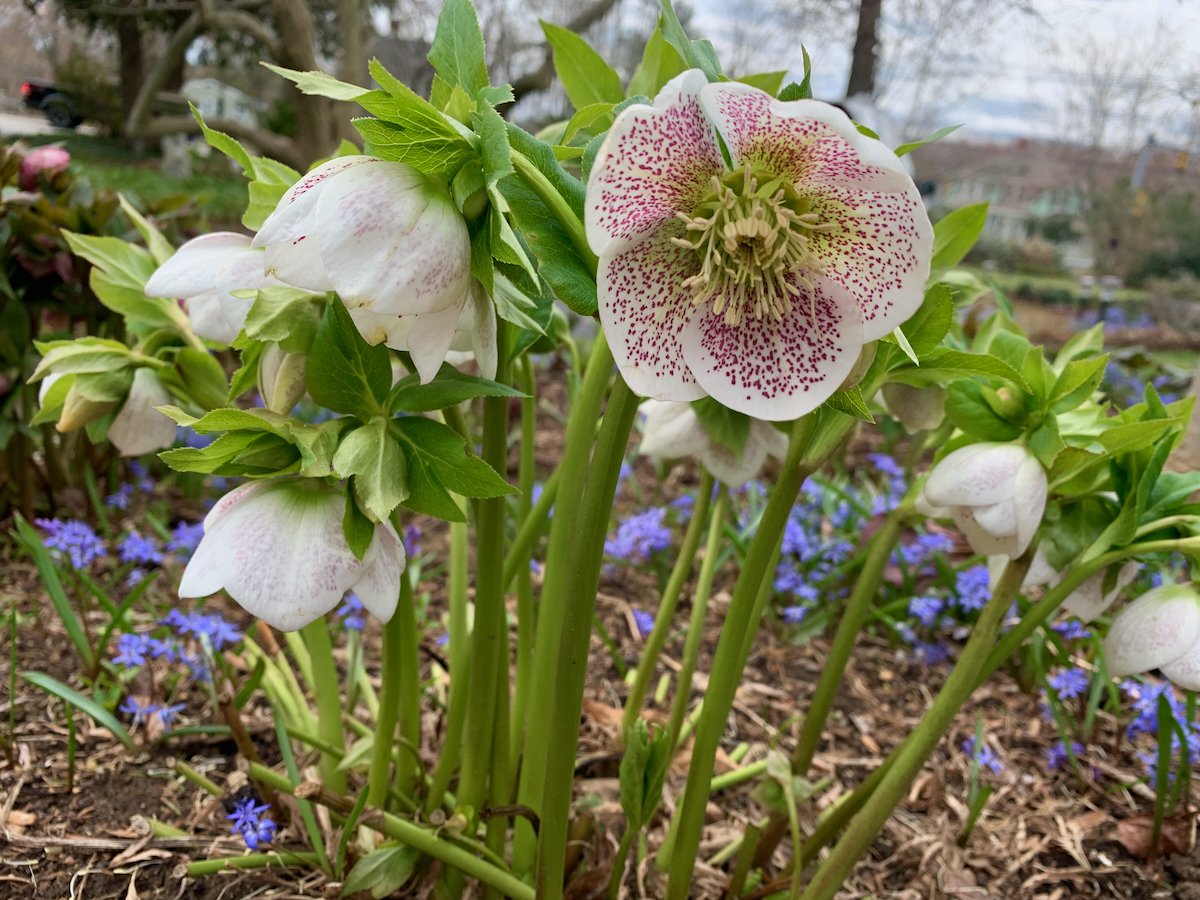Snowdrops Carpet the Early Spring Garden
/Few flowers are more appreciated than the first blossoms of spring. One of the earliest flowers is the diminutive snowdrop, usually blooming several weeks before crocuses appear. Often emerging out of a blanket of snow, the aptly named snowdrop flower resembles three drops of milk hanging from a stem. Its Latin name, Galanthus, means “milk-white flowers.” The plants grow to a height of 4-8”, and exhibit beautiful bright white blossoms punctuated with a bright green spots, and a faint honey fragrance.
Although there are more than 70 varieties of snowdrops in cultivation, only two types are widely grown – the common snowdrop, Galanthus nivalis, and the Giant Snowdrop, Galanthus elwesii. The plants are native to Europe and the Mid-East, from the Pyrenees north to Poland and east to Russia, Turkey and Syria. They have become wildly popular in the British Isles, where there are entire gardens dedicated to snowdrop cultivation. Scotland hosted its first Snowdrop Festival in 2007 with 60 gardens participating. The most famous snowdrop garden is Colsbourne Park in the English Cotswolds, the ancestral home of plant hunter Henry John Elwes, who collected the elwessi hybrids in Turkey and introduced them into modern cultivation in the 1870s.
Galantophiles are fascinated by the subtle variations between cultivars, from the double flowers of G. ‘Flore Pleno’, to the gold dashes of ‘Lutescens”, to the broad, shiny leaves of G. ikariae, or the rare autumn blooms of G. reginae-olgae.
Snowdrops grow best in areas with a cool winter, and are hardy in zones 3-7. They take full sun to part shade, and can be grown under deciduous trees or shrubs because they will bloom before the trees leaf out in the spring. They prefer moist, humus-rich soil with good drainage, but can also tolerate an area with dry shade once established. After the plants finish flowering, their foliage should be allowed to fully die down on its own. Like other members of the Amaryllis family, snowdrops are avoided by deer and voles.
Snowdrops grow from tiny bulbs, which should be planted in the garden in fall with crocuses, daffodils, and other spring-blooming bulbs. Purchased bulbs must not be allowed to dry out, so it is best to plant them immediately or soak them overnight prior to planting. Like other small bulbs, snowdrops look best planted in clumps, so plant them 2-3” apart and 3” deep. Many gardeners recommend planting snowdrops from divided fresh clumps in the spring, after their blooms have faded, but before the foliage turns yellow. If you have any friends that grow snowdrops in their garden, this is the time to ask if they will share their plants with you.
Small size and early bloom makes snowdrops ideal flowers for rock gardens, troughs, raised beds and the edges of garden beds. You will want to plant snowdrops where you will pass them frequently or see them from your window as their charming blossoms signal the beginning of spring. They naturalize freely both by self-seeding and through bulb offsets, and can form beautiful carpets in the lawn, in the shade garden or in the shrub border.
My small collection of snowdrops began when my 8-year old son brought home a blooming clump from his friend’s house. The snowdrops were admired and left in the pot through the summer. At some point the pot was knocked over, and the snowdrops rooted themselves in the mulch under the cedar tree. The following spring they appeared there and next to our pond. Last spring I decided to move them to my circular shade bed in the driveway, because I had read that miniature bulbs can be planted around the bases of hostas. They will bloom before the hosta shoots poke out of the ground, and the emerging hosta leaves will hide the snowdrops’ yellowing foliage in May. As with any small bulbs, however, you never manage to remove the whole clump, so this year I have snowdrops popping up in a number of places. I can barely wait until I am 80 and the entire garden is white with snowdrop blooms in early March.
To start your own collection of Galanthus varieties, visit brentandbeckybulbs.com and vanengelen.com.
You Might Also Like













